Drawing Hands: Essential Tips and Techniques
Drawing hands can feel like a Herculean task for many artists. Why is that? Well, hands are incredibly complex structures, combining a multitude of bones, muscles, and tendons that work in harmony to create intricate movements. But fear not! This article is designed to guide you through the maze of hand anatomy, perspective, and practical exercises that will transform your hand-drawing skills from daunting to delightful. By the end, you'll not only understand the mechanics behind hands but also be equipped with the techniques to depict them with confidence!
A solid grasp of hand anatomy is crucial for realistic drawing. Imagine trying to build a house without understanding the blueprint; similarly, without knowing how a hand is constructed, your drawings may lack authenticity. The human hand consists of 27 bones, including the carpals, metacarpals, and phalanges. Each finger has three bones, while the thumb has two, all connected by ligaments and tendons that allow for a wide range of motion. Understanding this structure is the first step to drawing hands that look both realistic and expressive.
Besides bones, it's essential to consider the muscles that give hands their shape and movement. The muscles in the forearm control the fingers and thumb, and their positioning can dramatically change the appearance of a hand. For instance, when a hand is open, the muscles are relaxed and spread out, whereas a fist will show tension and contraction. To truly master hand drawing, spend some time studying the anatomy. Use diagrams, photographs, or even your own hand as a reference. This foundational knowledge will pay off immensely in your artwork!
Perspective can dramatically affect how hands are depicted in art. When viewed from different angles, the proportions and shapes of the hand can change significantly. Think of perspective as the lens through which you view your subject. A hand reaching out towards the viewer will appear larger than one that is receding into the background. To achieve this, you can use techniques such as vanishing points and horizon lines to create depth and dimension in your drawings.
Foreshortening is essential for depicting hands in dynamic poses. It’s like when you stretch your arm out in front of you; the fingers appear smaller while the palm looks larger. This technique can add a sense of realism and movement to your drawings. To apply foreshortening effectively, start by sketching the basic shapes of the hand, focusing on how the fingers taper and how the palm expands. Don’t be afraid to exaggerate these shapes to create a more lifelike representation!
Identifying and avoiding common mistakes in foreshortening can enhance your drawings. Many artists struggle with proportion and end up with hands that look distorted or unnatural. Here are some pitfalls to watch out for:
- Neglecting the overall shape of the hand.
- Forgetting to adjust the size of the fingers based on perspective.
- Overly focusing on details before getting the basic shapes right.
By being aware of these mistakes, you can refine your technique and achieve better results.
Practical exercises will reinforce your foreshortening skills. Try the following activities to challenge and develop your understanding:
- Draw your hand in various poses, focusing on foreshortening.
- Use a mirror to capture the hand in different perspectives.
- Sketch hands from photographs, paying attention to how perspective alters their appearance.
Remember, practice makes perfect! The more you draw, the more confident you'll become.
Gesture drawing captures the essence of movement and form. It's all about quick sketches that convey the dynamic nature of hands. To practice, set a timer for one or two minutes and draw your hands in different poses. Don’t worry about details; focus on the flow and energy of the gesture. This exercise can help you understand the natural movement of hands and improve your overall drawing skills.
The texture of skin is vital for realism in hand drawings. To render skin tones effectively, consider using a combination of shading techniques. Start with a base tone and gradually build layers to create depth. Pay attention to the subtle variations in color and texture that can occur due to light and shadow. Wrinkles, veins, and other details can add authenticity to your work. Remember, the key is to observe and replicate what you see.
Utilizing references is key to improving your hand drawings. Whether it’s photographs, real-life observations, or anatomical diagrams, references can provide invaluable insight into the structure and movement of hands. When using references, try to analyze them critically. Ask yourself questions like, “What angle is this hand at?” or “How does the light affect the texture?” This analytical approach will enhance your understanding and accuracy.
Different mediums can influence hand drawing techniques. Digital art allows for easy adjustments and layering, while traditional methods offer a tactile experience that many artists cherish. Both have unique advantages, and understanding how to adapt your techniques across platforms can elevate your work. Experiment with both to discover what resonates with you!
- What are the best materials for drawing hands? Pencil and paper are great for beginners, while digital tablets offer flexibility for more experienced artists.
- How can I improve my hand-drawing skills? Regular practice, studying anatomy, and using references will significantly enhance your skills.
- Is it necessary to know anatomy to draw hands? While it's not mandatory, understanding anatomy will help you create more realistic and believable drawings.
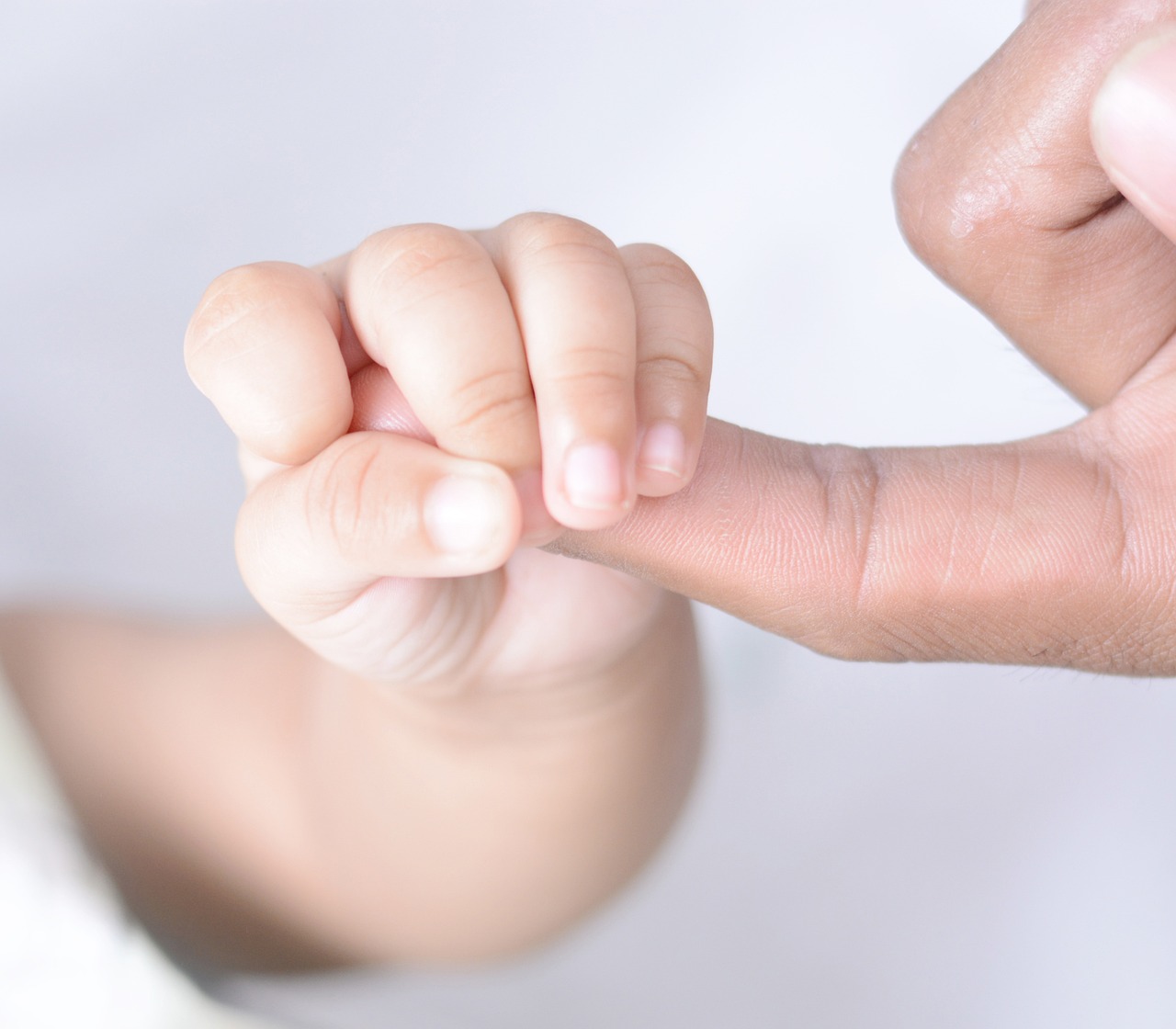
Understanding Hand Anatomy
When it comes to drawing hands, understanding the underlying anatomy is not just beneficial—it's essential. The human hand is a complex structure made up of bones, muscles, tendons, and skin, all working together to create the incredible range of motion we often take for granted. By breaking down the anatomy of the hand, artists can gain insights that will significantly improve their ability to depict it realistically.
The hand consists of 27 bones, categorized into three main groups: the carpals (wrist bones), the metacarpals (bones of the palm), and the phalanges (finger bones). Each of these bones plays a crucial role in the hand's function and appearance. For example, the carpals provide the foundation for the wrist's flexibility, while the metacarpals form the structure of the palm. The phalanges, divided into proximal, middle, and distal segments, give each finger its unique shape and movement ability.
| Bone Group | Number of Bones | Description |
|---|---|---|
| Carpals | 8 | Wrist bones that allow for a wide range of motion. |
| Metacarpals | 5 | Long bones that form the palm of the hand. |
| Phalanges | 14 | Finger bones that enable dexterity and grip. |
In addition to bones, the hand's anatomy includes muscles that facilitate movement. The intrinsic muscles, located within the hand itself, control fine motor skills, while the extrinsic muscles originate in the forearm and enable more robust movements. Understanding these muscle groups is vital for artists as they can affect how the hand looks in different poses. For instance, when the hand is clenched into a fist, certain muscles will bulge, creating a more defined appearance.
Moreover, the skin of the hand adds another layer of complexity. The texture and appearance of the skin can vary widely based on age, ethnicity, and even individual characteristics. For example, older hands may exhibit more wrinkles and age spots, while younger hands tend to be smoother. Artists should pay close attention to these details, as they can add a significant degree of realism to their drawings.
In summary, a thorough understanding of hand anatomy—encompassing bones, muscles, and skin—is crucial for any artist looking to master the art of drawing hands. By familiarizing yourself with these components, you'll be well on your way to creating more accurate and lifelike representations. So, next time you pick up your pencil, remember: the more you know about the anatomy of the hand, the better your drawings will be!
- What are the most important bones to know when drawing hands? The carpals, metacarpals, and phalanges are essential for understanding hand structure.
- How does muscle anatomy affect hand drawing? Knowing how muscles work can help you depict movement and tension more realistically.
- What should I focus on to improve my hand drawings? Pay attention to the proportions, structure, and details like skin texture and wrinkles.
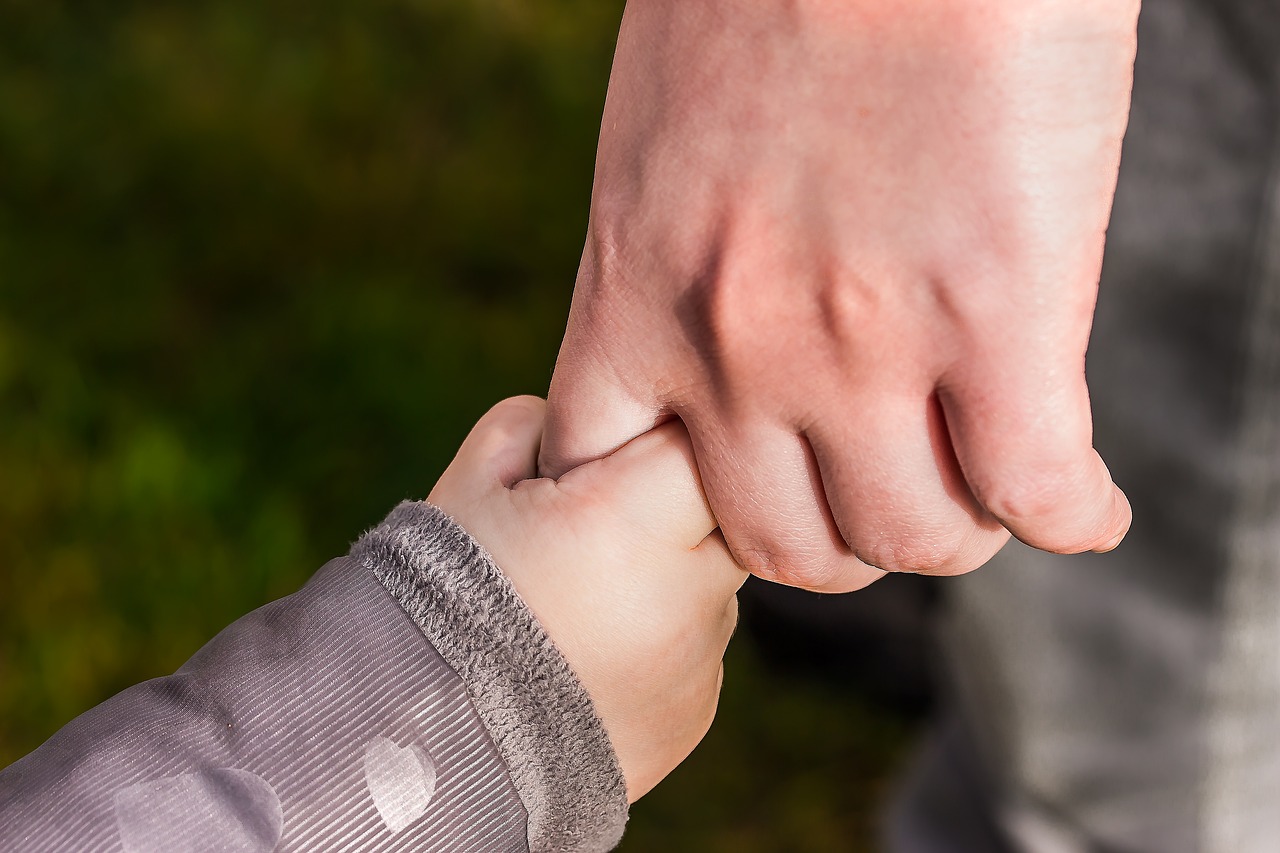
Mastering Perspective
When it comes to drawing hands, mastering perspective is like having the secret key to a treasure chest—it unlocks the potential for depth and realism. Imagine trying to capture the beauty of a sunset without understanding how the colors blend and shift; similarly, if you don’t grasp perspective, your hand drawings may fall flat. Perspective isn’t just about making things look smaller as they recede into the background; it’s about creating a sense of space and realism that draws the viewer in.
To truly understand perspective, you need to familiarize yourself with the concept of vanishing points and how they relate to the human form. Think of your hand as a three-dimensional object in a world where light and shadow play crucial roles. When drawing a hand reaching out towards the viewer, the fingers should appear larger and more pronounced, while the wrist and forearm taper off into the background. This visual trickery is what gives your drawings a dynamic quality, making them pop off the page.
One of the best ways to practice perspective is through observational drawing. Set up a still life that includes your own hand in various positions. Notice how the shape of your hand changes depending on the angle. Is it flat when you look from above, or does it seem to expand when viewed from the side? Take notes and sketch quickly to capture the essence of each pose. Remember, the goal is to convey movement and emotion, not just to replicate what you see.
Another technique to improve your perspective skills is to study the work of other artists. Analyze how they depict hands in different positions and angles. Pay attention to how they use perspective to create depth. You might even consider creating a comparison table to note the differences in their techniques:
| Artist | Technique Used | Effect Achieved |
|---|---|---|
| Artist A | Strong vanishing points | Dynamic depth |
| Artist B | Soft gradients | Subtle realism |
| Artist C | Bold outlines | Enhanced focus |
As you practice, don’t forget about the importance of light and shadow in perspective. Lighting can dramatically alter how we perceive shapes and forms. For example, a hand illuminated from the side will cast shadows that can help define its contours, while a hand in direct light may appear flatter. Experiment with different light sources to see how they affect your drawings.
Lastly, remember that mastering perspective is a journey, not a destination. It takes time, practice, and a lot of patience. Don’t be discouraged by initial struggles; instead, view them as stepping stones to improvement. The more you understand how perspective works, the more lifelike and engaging your hand drawings will become. So grab your sketchbook, find a comfortable spot, and start exploring the fascinating world of hand drawing through the lens of perspective!
- What is the best way to practice drawing hands?
The best way is through observational drawing, where you sketch your own hand in various poses and angles. - How can I improve my understanding of perspective?
Study the work of other artists, analyze their techniques, and practice drawing from life. - What role does light play in hand drawings?
Light helps define shapes and adds depth, making your drawings more realistic.

Foreshortening Techniques
Foreshortening is one of those magical techniques that can transform your hand drawings from flat to fabulous! Imagine trying to capture the essence of a hand reaching out toward you; without foreshortening, that hand might look like it’s just been squished into a pancake. So, what exactly is foreshortening? In simple terms, it’s the artistic technique used to create the illusion of an object receding strongly into the background or coming out of the picture plane. It’s all about perspective and how we perceive depth. When drawing hands, mastering this technique can significantly improve the realism and dynamism of your artwork.
To apply foreshortening effectively, you need to understand how different parts of the hand relate to one another in space. When a hand is extended toward the viewer, the fingers will appear shorter, and the palm will seem larger than it actually is. This is because the parts of the hand that are closer to the viewer will take up more visual space than those that are farther away. One way to practice this is to observe your own hand in different positions. Try holding your hand at various angles and distances from your face, then sketch what you see. This real-life observation will help you internalize the concept of foreshortening.
Here are some tips to enhance your foreshortening skills:
- Start with Basic Shapes: Break down the hand into simple geometric shapes. For instance, the palm can be represented as a rectangle, while the fingers can be drawn as cylinders. This simplification makes it easier to visualize how each part will appear when foreshortened.
- Use Guidelines: Lightly sketch lines to indicate the direction and angle of the hand. This will help you maintain the correct proportions as you add details.
- Practice with Different Angles: Don’t just stick to one view. Experiment with hands in various poses, such as a fist, an open hand, or fingers pointing. Each position will require a different approach to foreshortening.
Another effective practice is to use reference images that showcase hands in various positions. When you study these images, pay close attention to how the fingers and palm appear in relation to one another. You’ll notice that the closer a finger is to the viewer, the larger it appears, while those farther away will seem smaller and more compressed. This observation is key to achieving believable foreshortening.
As you become more comfortable with foreshortening, consider incorporating it into your gesture drawings. Gesture drawing is all about capturing the essence of movement, and foreshortening can add a layer of dynamism to your sketches. When a hand is in motion, it can create a powerful visual impact if drawn with the right foreshortening techniques.
In summary, mastering foreshortening is essential for any artist looking to create realistic and engaging hand drawings. By breaking down the hand into basic shapes, utilizing guidelines, and practicing with various angles, you can enhance your skills and bring your drawings to life. Remember, practice makes perfect, so keep sketching and experimenting!
Q: What is foreshortening?
A: Foreshortening is an artistic technique used to create the illusion of depth by depicting objects or figures that appear shorter than they are in reality due to their position relative to the viewer.
Q: Why is foreshortening important in drawing hands?
A: Foreshortening is crucial for achieving realistic representations of hands, especially when they are in dynamic poses. It helps convey depth and perspective, making the hand appear three-dimensional.
Q: How can I practice foreshortening?
A: You can practice foreshortening by observing your own hand in different positions, sketching from reference images, and breaking down the hand into basic shapes before adding details.
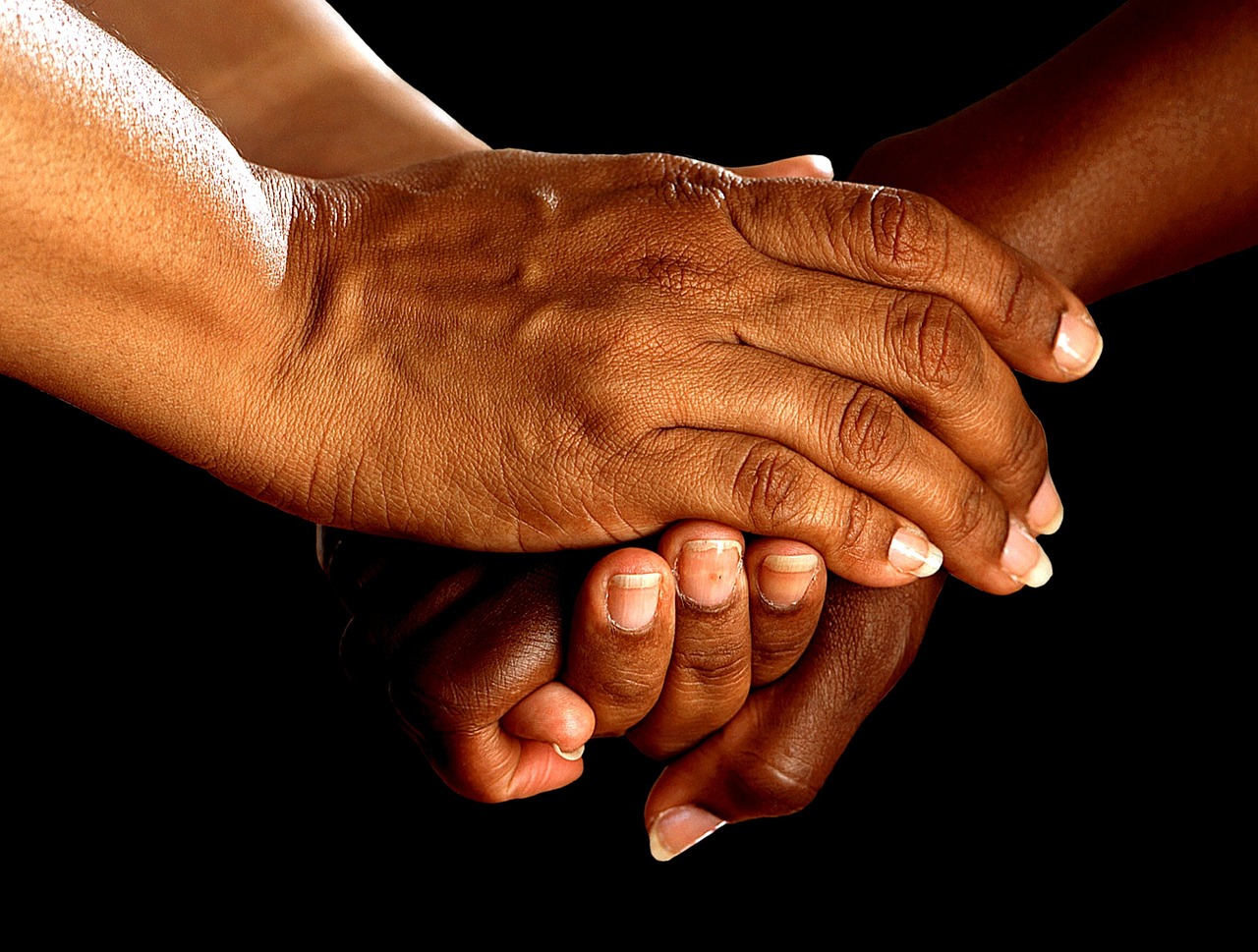
Common Mistakes to Avoid
When it comes to drawing hands, many artists, both beginners and seasoned pros, often fall into the trap of making common mistakes that can hinder their progress. One of the most prevalent errors is the failure to understand the anatomy of the hand. Without a solid grasp of how the bones and muscles interact, your drawings may end up looking stiff or unrealistic. It's crucial to study the underlying structure, as this knowledge allows you to portray hands in a more lifelike manner. Think of it like building a house: without a strong foundation, the entire structure is at risk of collapsing.
Another frequent pitfall is neglecting perspective. Hands are three-dimensional objects, and drawing them from different angles can be challenging. Artists often make the mistake of drawing hands as flat shapes rather than considering their volume and depth. This oversight can lead to awkward and unrealistic representations. To avoid this, practice sketching hands from various viewpoints and incorporate techniques like foreshortening to create a sense of dimension. Remember, perspective is like the magic lens of your drawing; without it, everything can appear distorted.
Additionally, many artists struggle with proportions. The human hand is a complex structure with varying lengths and widths for fingers, palms, and wrists. A common mistake is drawing fingers that are too short or too long in relation to the palm. To help with this, you might want to create a simple reference chart that outlines the average proportions of a hand. For example, the length of the middle finger is typically about the same as the length of the palm. Understanding these proportions will significantly enhance the accuracy of your hand drawings.
Moreover, artists often overlook the importance of details. While it's easy to get caught up in the overall shape and form, neglecting details such as wrinkles, knuckles, and skin texture can make your drawings appear flat and lifeless. These elements add depth and realism, so take the time to observe and incorporate them into your work. Think of these details as the seasoning in a dish; without them, the overall flavor can be bland.
Finally, one of the biggest mistakes is not practicing regularly. Like any skill, drawing requires consistent practice to improve. Set aside time each day to sketch hands in different poses, experimenting with various techniques. Consider keeping a sketchbook dedicated solely to hand studies. This will not only help you refine your skills but also build your confidence in drawing hands.
To summarize, here are some common mistakes to avoid when drawing hands:
- Neglecting hand anatomy
- Ignoring perspective
- Misjudging proportions
- Overlooking details
- Lack of regular practice
By being aware of these common mistakes and actively working to avoid them, you can significantly enhance your hand-drawing skills and create more realistic and engaging artwork.
Q: What is the best way to practice drawing hands?
A: The best way to practice is to sketch hands from real life or reference images regularly. Focus on different poses and perspectives to build your skills.
Q: How important is understanding anatomy for drawing hands?
A: Understanding anatomy is crucial. It helps you create more realistic and proportionate drawings, making your art more engaging.
Q: Should I focus more on digital or traditional techniques for drawing hands?
A: Both mediums have their advantages. It’s beneficial to experiment with both to discover which one suits your style and preferences better.
Q: How can I improve my hand-drawing skills quickly?
A: Regular practice, studying anatomy, and learning about perspective will help you improve quickly. Try to draw hands every day, even if it's just for a few minutes!
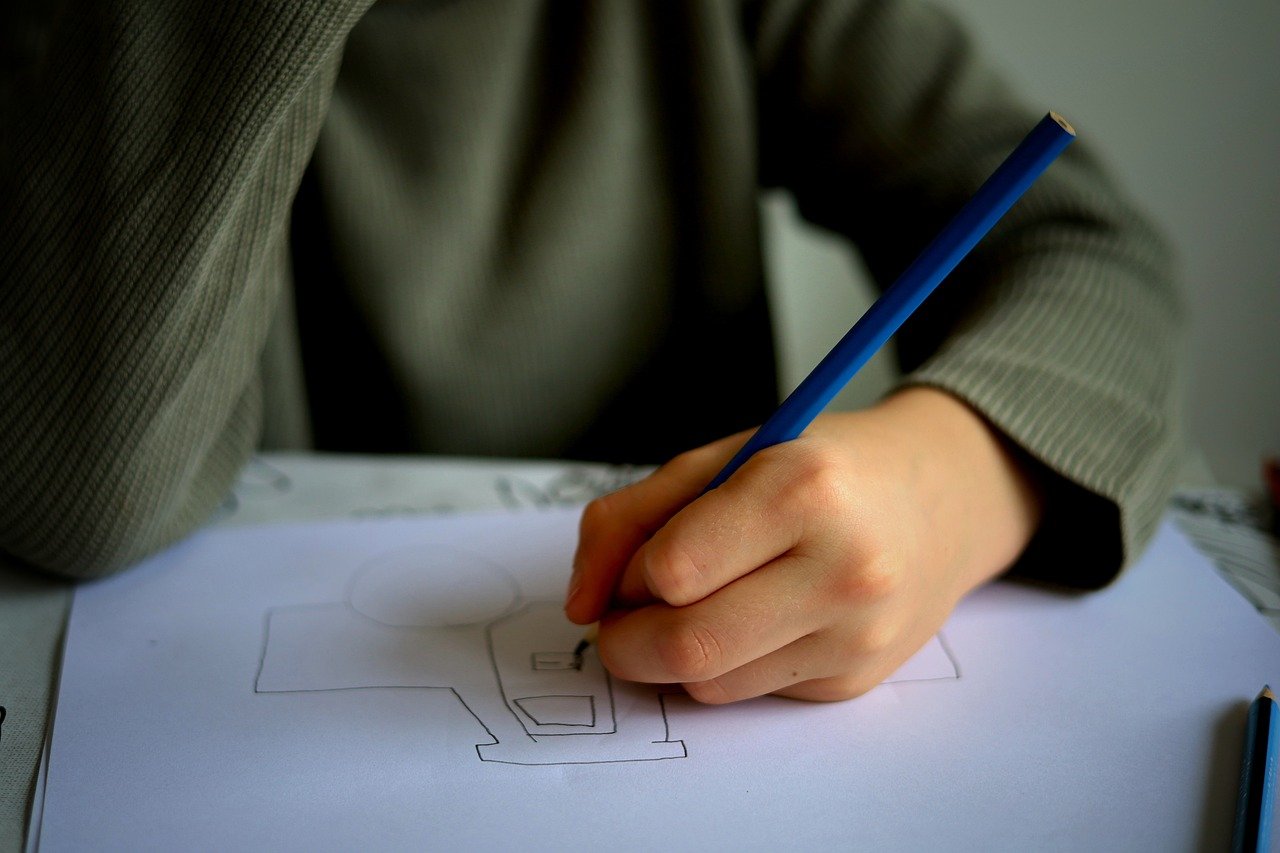
Practice Exercises
When it comes to mastering the art of drawing hands, practice is your best friend. Just like a musician needs to practice scales, artists need to engage in targeted exercises that focus on the unique challenges hands present. Here are some engaging exercises that can elevate your hand-drawing skills to new heights.
First, try the Contour Drawing Exercise. This involves drawing the outline of a hand without looking at your paper. The goal is to train your eye to capture the form accurately. Start by observing your own hand or that of a friend, and let your pencil follow the contours. This exercise not only sharpens your observation skills but also helps you understand the flow and structure of the hand.
Next, consider the Gesture Drawing technique. Set a timer for 30 seconds to a minute and sketch your hand in various poses. The focus here is on capturing the essence of movement rather than getting bogged down in details. This can be particularly helpful for understanding how hands interact with objects or express emotions. You might find it useful to use a mirror or take quick photos of your own hands in different positions to reference during this exercise.
Another effective practice is the Foreshortening Challenge. Choose a position for your hand where the fingers are extended towards the viewer. Draw the hand in this position, paying close attention to how the perspective alters the proportions. This exercise will push you to think critically about depth and dimension, making your drawings more dynamic. You might want to create a small table to track your progress and the different angles you’ve tried:
| Angle | Notes | Time Spent |
|---|---|---|
| Front View | Focus on finger lengths | 15 mins |
| Side View | Pay attention to wrist position | 15 mins |
| Overhead View | Emphasize palm shape | 15 mins |
Finally, engage in Texture Rendering Exercises. Use different materials such as pencils, charcoal, or digital tools to create textures that mimic skin, nails, and hair. Try to replicate the look of veins, wrinkles, and other details that add realism to your drawings. This will not only improve your technical skills but also deepen your understanding of how light interacts with the hand’s surface.
Incorporating these exercises into your routine can significantly improve your hand-drawing abilities. Remember, consistency is key! Set aside dedicated time each week to focus on these practices, and you’ll be amazed at how quickly you progress. Don’t forget to keep a sketchbook handy; it’s a great way to document your journey and reflect on your growth as an artist.
Q1: How often should I practice drawing hands?
A: Aim for at least 30 minutes a few times a week. Consistency is more important than duration.
Q2: What materials do I need to get started?
A: All you need is some paper and a pencil. As you progress, you can experiment with charcoal, ink, or digital tools.
Q3: Can I use photos as references?
A: Absolutely! Using photos is a great way to understand different angles and poses. Just make sure to practice from life too.
Q4: How can I avoid stiffness in my drawings?
A: Focus on gesture drawing and capturing movement. The more you sketch dynamically, the more fluid your drawings will become.
Q5: Is it normal to struggle with drawing hands?
A: Yes! Many artists find hands challenging. Keep practicing, and don’t get discouraged.

Gesture Drawing
Gesture drawing is like catching a fleeting moment in time; it’s all about capturing the essence of movement and form in a matter of seconds. Think of it as a dance between your pencil and the subject, where every stroke breathes life into the paper. This technique is particularly vital when drawing hands, which are often in motion, expressing emotion, or interacting with objects. The goal here is to convey the energy and fluidity of the pose rather than to focus on intricate details.
To get started with gesture drawing, you might want to set a timer—yes, you heard that right! Aim for quick sessions, typically between 30 seconds to 2 minutes per pose. This encourages you to make bold, decisive marks without overthinking. It’s almost like a warm-up exercise for your artistic muscles. As you sketch, try to focus on the overall shape of the hand and its position in space, rather than getting bogged down by the minutiae of fingers and knuckles.
Here are some key points to keep in mind when practicing gesture drawing:
- Line of Action: Start by establishing a line of action, which is an imaginary line that runs through the gesture. This helps create a sense of flow and movement.
- Proportions: While you don’t need to be precise, having a rough understanding of proportions will help you maintain balance in your drawings.
- Expressiveness: Don’t shy away from exaggerating certain aspects of the hand’s pose. This can add character and dynamism to your sketches.
Another technique to enhance your gesture drawing skills is to observe real-life movements. Whether you’re in a café or a park, take a moment to watch how people use their hands. Notice how they gesture while talking, how they hold objects, or even how they relax their hands. These observations can serve as invaluable references when you’re back at your drawing board.
As you become more comfortable with gesture drawing, consider varying your approach by incorporating different materials. For instance, using charcoal can enable you to create more fluid lines, while ink may encourage you to be bolder and more confident in your strokes. The medium you choose can influence the energy of your drawing, so don’t hesitate to experiment!
Remember, the essence of gesture drawing lies in the freedom to express movement and emotion. It’s about capturing the spirit of the pose rather than achieving perfection. So, let your hand flow across the page, and enjoy the process of bringing hands to life through your art!
Q: How long should I spend on a gesture drawing?
A: Typically, gesture drawings are done in quick bursts of 30 seconds to 2 minutes. This encourages spontaneity and helps you focus on the overall movement rather than details.
Q: What materials are best for gesture drawing?
A: You can use a variety of materials such as pencils, charcoal, or ink. Each medium offers a different quality of line and can influence the energy of your drawing.
Q: Can I use photographs for gesture drawing?
A: While gesture drawing is best practiced from life, using photographs can be helpful for understanding movement. Just remember to keep the focus on capturing the essence of the pose.
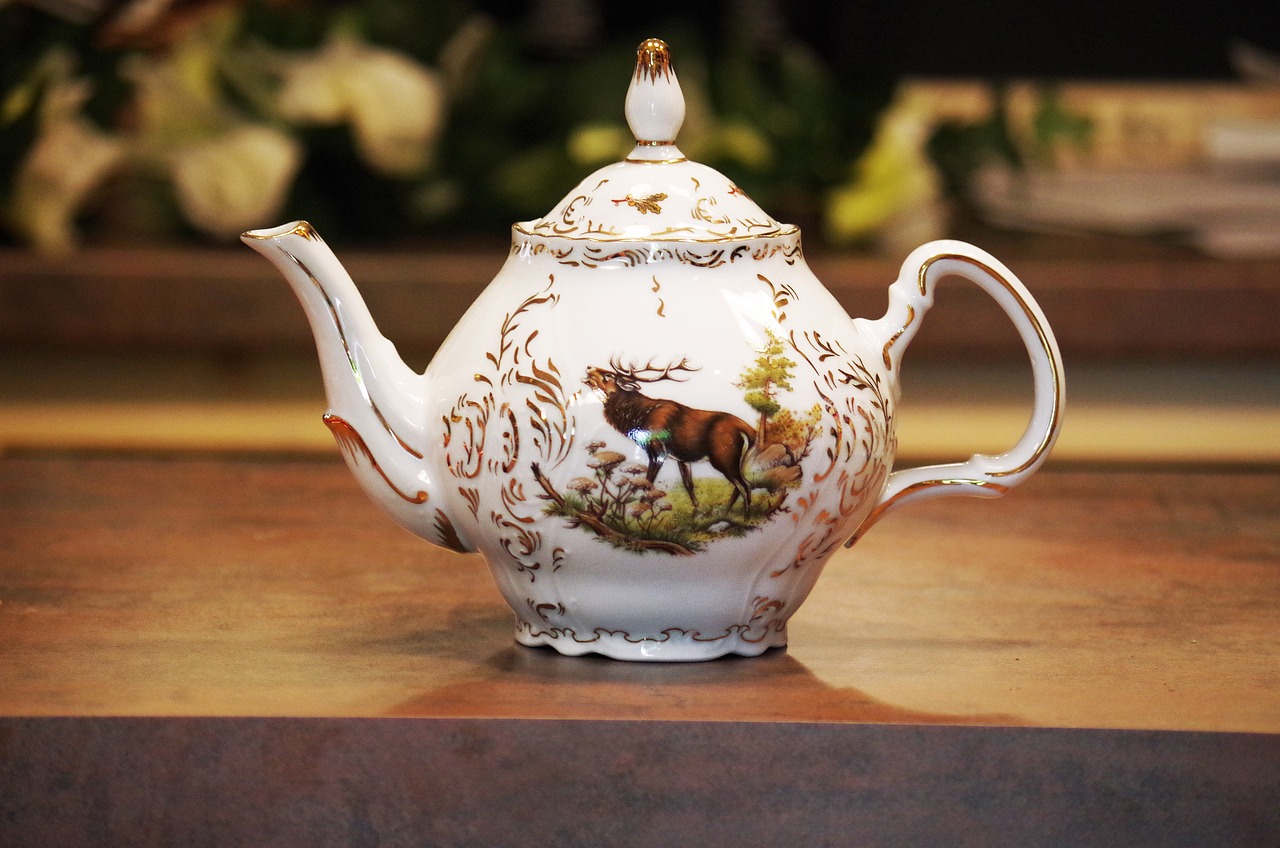
Techniques for Realistic Textures
When it comes to drawing hands, one of the most significant aspects that can elevate your artwork from ordinary to extraordinary is the realistic texture. The texture of skin, with its subtle variations and intricate details, plays a pivotal role in conveying realism. To achieve this, it's essential to observe and replicate the nuanced features of human skin, such as wrinkles, pores, and veins. Each of these elements contributes to the overall lifelike appearance of your drawing.
One effective technique for rendering skin texture is to start with a base layer that captures the general skin tone. Use a medium that allows for blending, such as colored pencils or pastels, to create a smooth foundation. Once you have your base, you can gradually build up layers of color to add depth. For instance, you might begin with a light peach or beige and then add darker shades in areas that naturally have more shadow, like around the knuckles or between the fingers.
Another critical aspect is the application of highlights and shadows. Highlights can be achieved by leaving areas of the paper untouched or using a white pencil or gel pen to create the illusion of light reflecting off the skin. Shadows, on the other hand, can be deepened with darker tones, emphasizing the contours and adding volume. This interplay between light and dark not only enhances the three-dimensionality of the hand but also brings out the texture.
In addition to color, the use of various tools can significantly impact the texture of your drawing. For traditional mediums, consider experimenting with different brushes, sponges, or even your fingers to create unique textures. For digital artists, the choice of brush settings can mimic the effect of traditional media, allowing for the creation of realistic skin textures. Don't hesitate to play around with opacity and brush size to get the desired effect.
To further enhance the realism in your hand drawings, pay close attention to the details. Look closely at your own hands or reference images to notice the small imperfections that make skin unique. These could include freckles, scars, or even the subtle variations in color that occur naturally. By incorporating these elements into your artwork, you will create a more authentic representation.
Finally, it's essential to remember that practice is key. The more you draw hands and experiment with different techniques, the more skilled you will become at capturing realistic textures. Consider setting aside time each week to focus solely on drawing hands, experimenting with different poses and lighting conditions to see how they affect the texture.
- What materials are best for achieving realistic textures in hand drawings?
Using a combination of colored pencils, pastels, or charcoal can yield excellent results. Digital artists can also benefit from various brush settings in software like Photoshop or Procreate. - How can I practice drawing hands effectively?
Consider doing gesture drawings, studying reference images, and practicing different poses regularly to improve your skills. - What should I focus on when drawing hands?
Pay close attention to anatomy, proportions, and the unique textures of skin to create lifelike representations.
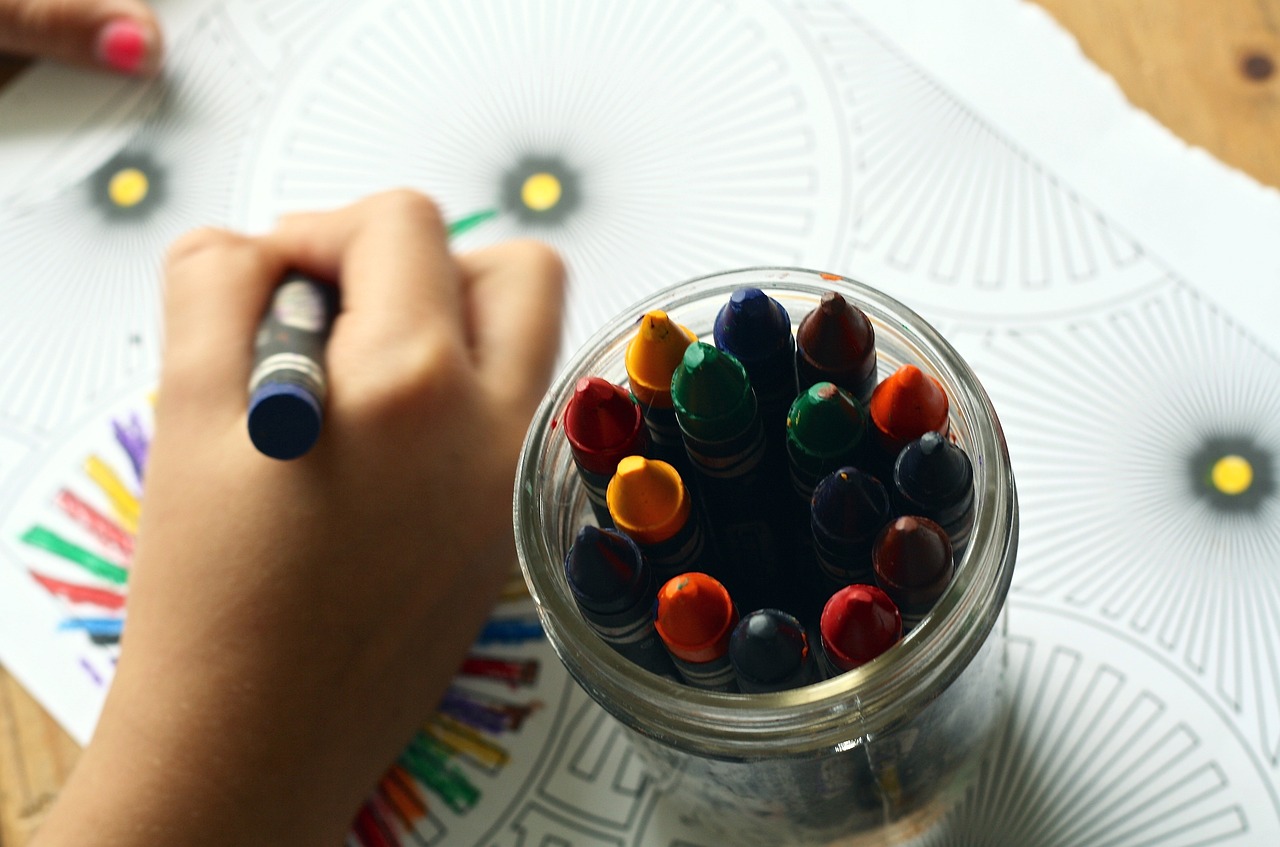
Using References Effectively
When it comes to drawing hands, utilizing references can be a game-changer. Think of reference images as your personal guides, much like a map that leads you through the intricate landscape of hand anatomy and movement. They provide a visual foundation that can significantly enhance your understanding and accuracy. But how do you use these references effectively? Let's dive into some strategies that can elevate your hand-drawing skills.
First and foremost, it's essential to choose the right references. Look for high-quality images that showcase hands in various poses and lighting conditions. This diversity will help you grasp not only the structure of the hand but also how light interacts with it. For instance, consider the following types of references:
- Static Images: These are great for studying the anatomy and proportions of the hand. Look for images that are clear and detailed.
- Dynamic Poses: Hands in action can teach you about movement and foreshortening. Capture the essence of how hands express emotion or action.
- Different Angles: Reference images from multiple angles can help you understand how the hand looks in three dimensions, which is crucial for realistic drawing.
Once you've gathered your references, the next step is to analyze them. Don’t just copy what you see; instead, break down the image into its basic shapes. Ask yourself questions like: What shapes make up the fingers? How do the joints bend? This analytical approach will deepen your understanding and improve your observational skills. You might even find it helpful to create a reference board where you can pin various images for quick access.
Additionally, consider using digital tools to manipulate your references. If you're working digitally, software like Photoshop allows you to rotate, resize, and adjust the lighting of your reference images. This flexibility can help you visualize how different elements come together in your drawing. For traditional artists, printing out references and sketching them in different orientations can serve a similar purpose.
Another effective technique is to combine multiple references into one drawing. For example, you might want to capture the hand's structure from one image while using the gesture from another. This approach can lead to more dynamic and interesting artworks, as it allows you to create a unique representation rather than a direct copy of one pose.
Finally, remember that references are there to assist you, not to limit your creativity. Use them as a starting point, but don't be afraid to deviate from them. As you become more comfortable with drawing hands, you’ll find yourself relying less on references and more on your understanding of the anatomy and movement. This transition is a sign of growth and mastery in your artistic journey.
In conclusion, using references effectively involves selecting high-quality images, analyzing their structure, manipulating them for better understanding, and creatively combining them. With practice, you'll find that references can significantly enhance your hand-drawing skills, making the process not only easier but also more enjoyable.
Q: How do I find good reference images for drawing hands?
A: You can find quality reference images on platforms like Pinterest, stock photo websites, or even by taking your own photographs. Look for images that show hands in various angles and positions.
Q: Is it okay to copy reference images directly?
A: While it's perfectly fine to use references for practice, aim to analyze and interpret them rather than copy them verbatim. This will help you develop your own style and understanding of hand anatomy.
Q: How can I improve my understanding of hand anatomy?
A: Studying anatomical diagrams, observing your own hands, and practicing with references can greatly improve your understanding. Consider taking a life drawing class focused on anatomy for hands and other body parts.
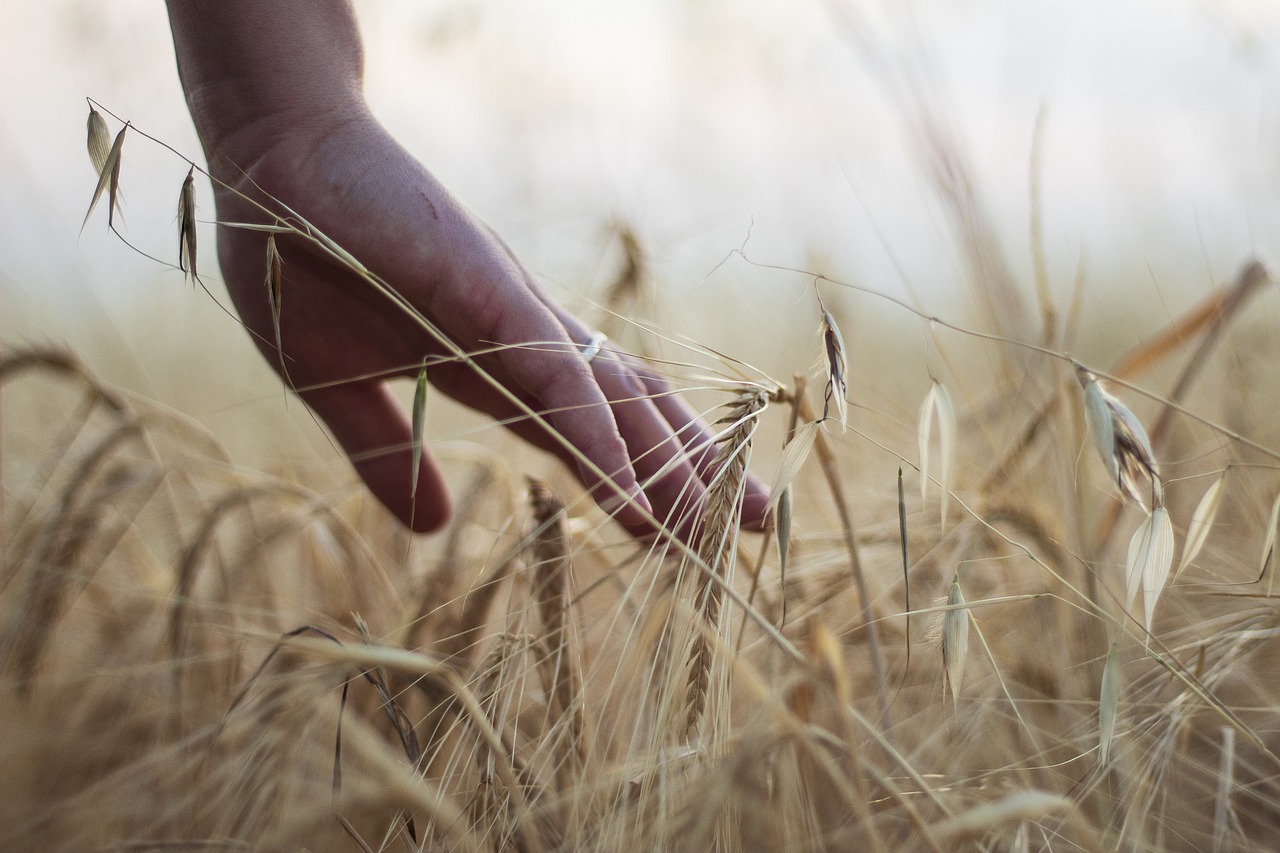
Digital vs. Traditional Techniques
When it comes to drawing hands, the choice between digital and traditional techniques can significantly influence your artistic process and final results. Each medium offers its unique advantages and challenges, making it essential for artists to understand the distinctions to better harness their skills. In the digital realm, tools like graphic tablets and software such as Adobe Photoshop or Procreate allow for a level of flexibility that traditional methods often can't match. For instance, with digital tools, you can easily undo mistakes, manipulate layers, and experiment with colors without the fear of ruining your work. This flexibility encourages experimentation, allowing artists to push their creative boundaries.
On the other hand, traditional techniques, such as pencil, charcoal, or ink, provide a tactile experience that many artists cherish. The feel of the pencil on paper, the way ink flows, and the texture of the canvas contribute to a unique connection between the artist and their work. Traditional methods often demand a different kind of precision and can foster a deeper understanding of fundamental drawing techniques. The limitations of traditional media can also inspire creativity; for example, the inability to erase completely can lead to innovative solutions and styles that might not emerge in a digital setting.
Additionally, the choice between these two methods can affect how you approach drawing hands specifically. In digital art, you might find it easier to adjust proportions and perspectives quickly, which is particularly useful when tackling complex poses or foreshortening. Conversely, traditional techniques often encourage a more deliberate approach, allowing you to focus on the nuances of hand anatomy and the subtleties of skin texture as you work through each stroke. This can lead to a more intimate understanding of the subject, which is invaluable for creating realistic representations.
To illustrate the differences further, consider the following table that highlights some key comparisons between digital and traditional techniques:
| Feature | Digital Techniques | Traditional Techniques |
|---|---|---|
| Flexibility | High - Easy to edit and experiment | Limited - Changes can be difficult |
| Learning Curve | Moderate - Requires understanding of software | Varies - Depends on medium and tools |
| Texture and Detail | Smooth and clean, but can lack depth | Rich textures and depth, but can be messy |
| Cost | Software and hardware costs can be high | Inexpensive materials available |
Ultimately, the choice between digital and traditional techniques boils down to personal preference and the specific goals of your art. Many artists find value in blending both methods, using digital tools for initial sketches and traditional techniques for final touches, or vice versa. This hybrid approach can yield the best of both worlds, allowing for the freedom of digital art and the authenticity of traditional methods. So, whether you’re sketching hands on a tablet or with a pencil on paper, remember that each technique has its own charm and mastery comes from practice in both.
- Which method is better for beginners? It depends on personal preference. Digital methods may offer more forgiving tools, while traditional methods can help build fundamental skills.
- Can I learn both techniques at the same time? Absolutely! Many artists benefit from exploring both to enhance their versatility.
- What tools do I need for digital drawing? A graphic tablet and drawing software are essential for digital art, while traditional art requires basic supplies like pencils, paper, and erasers.
Frequently Asked Questions
- Why is understanding hand anatomy important for drawing?
Understanding hand anatomy is crucial because it lays the foundation for realistic representations. Knowing the structure, including bones and muscles, allows artists to depict hands accurately, making their artwork more lifelike and relatable. Think of it as knowing the blueprint before building a house; without it, your drawing might end up looking more like a cartoon than a real hand!
- What are some tips for mastering perspective in hand drawings?
Mastering perspective involves practicing how hands look from different angles. A great tip is to use simple shapes to block out the hand's form before adding details. This approach helps you visualize depth and dimension. Remember, perspective is like a magic trick; it creates an illusion that can make your drawings pop right off the page!
- How can I effectively use foreshortening in my hand drawings?
Foreshortening can be tricky, but it’s all about exaggerating the size of parts of the hand that are closer to the viewer while minimizing those that are further away. Practice sketching hands in various dynamic poses to get a feel for how foreshortening affects the overall look. It’s like trying to capture a moment in time; the more you practice, the more natural it will feel!
- What common mistakes should I avoid when drawing hands?
Some common mistakes include neglecting the proportions of the fingers or failing to capture the hand's natural curves. To avoid these pitfalls, regularly refer back to your anatomy studies and use real-life references. Remember, even seasoned artists make mistakes; it's all part of the learning process!
- What practice exercises can help improve my hand drawing skills?
Engaging in gesture drawing is a fantastic exercise to enhance your skills. Set a timer for quick sketches of hands in different poses, focusing on capturing movement and expression rather than perfection. This practice helps you loosen up and develop a more fluid drawing style. Think of it as a workout for your artistic muscles!
- How can I render realistic skin textures in my hand drawings?
To render realistic skin textures, pay attention to the subtle variations in skin tone and the presence of details like wrinkles and veins. Using a combination of shading techniques can help achieve depth. Consider your hand as a canvas; every line and shadow adds character to your artwork!
- What is the best way to use reference images for hand drawing?
Using reference images effectively means choosing high-quality images that show hands in various positions and lighting. Study these references to understand how light interacts with the skin and how different poses affect the hand's structure. It’s like having a personal tutor guiding you through the intricacies of hand drawing!
- Should I prefer digital or traditional methods for drawing hands?
Both digital and traditional methods have their unique advantages. Digital art allows for easy corrections and experimentation, while traditional methods can provide a tactile experience that many artists love. Ultimately, it depends on your personal preference and what feels most comfortable for you. Think of it as choosing between a pencil and a stylus; both can create amazing art!



















